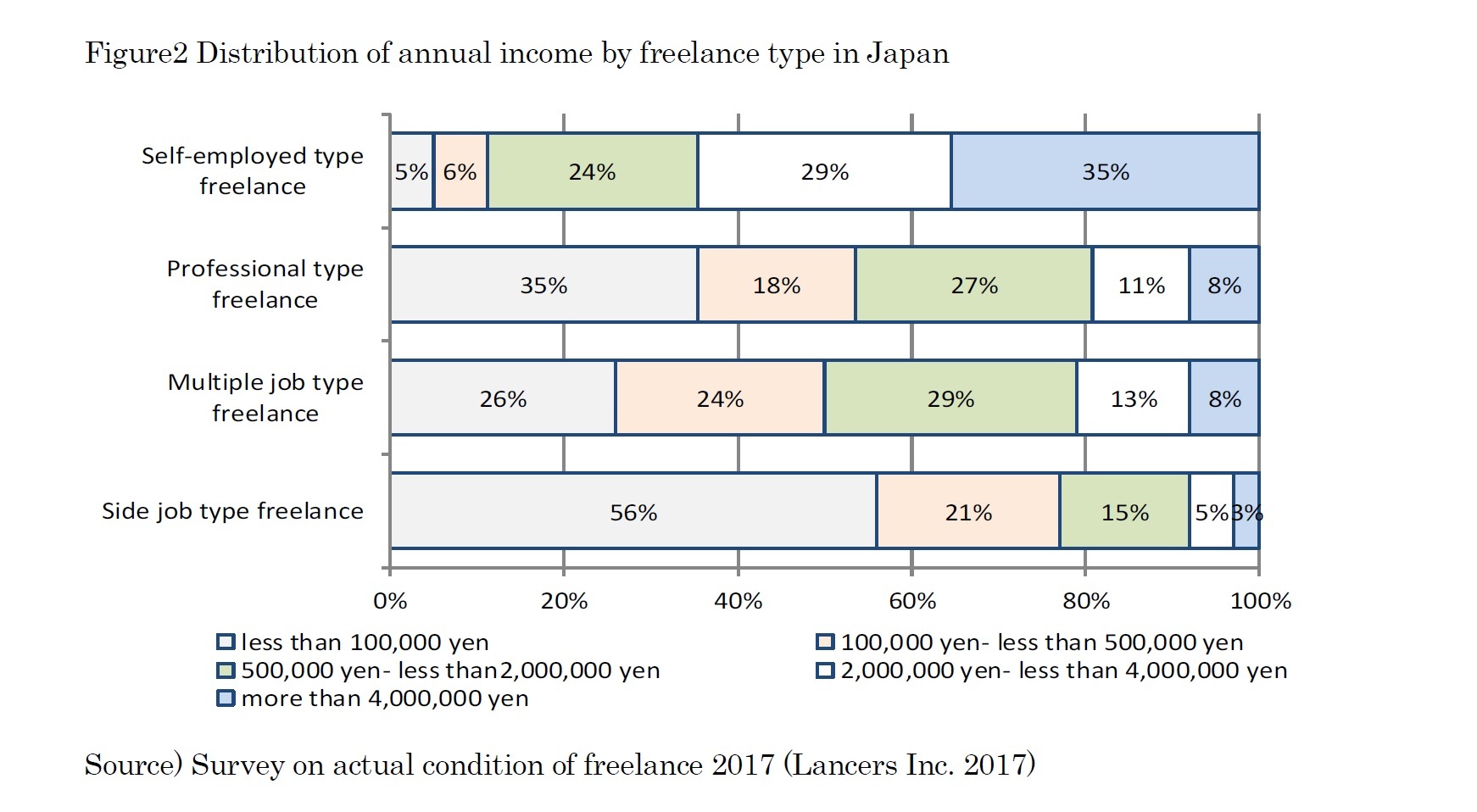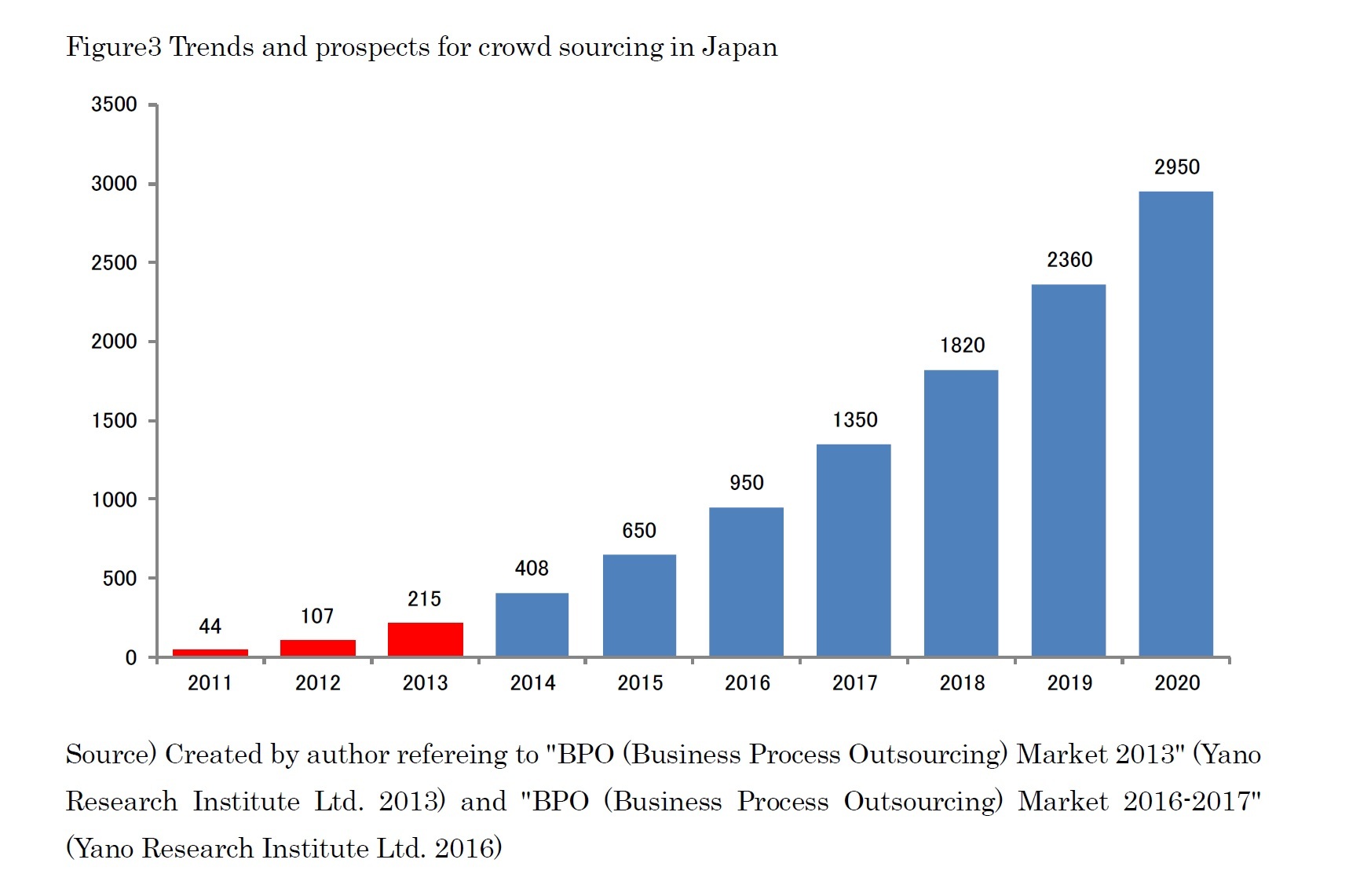Crowd work: The rise of unstable work and potential measures to prevent the proliferation of the working poor | ニッセイ基礎研究所
- シンクタンクならニッセイ基礎研究所 >
- 経済 >
- 労働市場 >
- Crowd work: The rise of unstable work and potential measures to prevent the proliferation of the working poor
Crowd work: The rise of unstable work and potential measures to prevent the proliferation of the working poor

生活研究部 上席研究員・ヘルスケアリサーチセンター・ジェロントロジー推進室兼任 金 明中
The current situation of crowd workers in Japan
(1) Side job-type freelance (those who work freelance as a supplement to full-time work)
(2) Multiple job-type freelance (those who work for multiple companies regardless of the employment system)
(3) Professional-type freelance (those who are independent professionals without specific workplaces)
(4) Self-employed-type freelance (those who are owners managing their own businesses)
There has been an especially large increase in the number of side job-type freelance—4.58 million in 2017, up from 4.16 million in 2016. The Japanese government is laying out a policy to support a full-time worker`s secondary job as part of the work-style reforms. Thus, the number of side job-type freelancers is expected to rise more and more. However, in Japan, many of the freelances are currently participating in the labor market with unstable earnings.
For example, the average annual income of "Self-employed-type freelance" with the highest income among freelances is 3.5 million yen, which is lower than employee's average salary of 4.2 million yen. Most of the freelances enter the labor market with unstable earnings,
At the moment, the number of registered businesses operator who provide crowd sourcing in Japan has reached hundreds of thousands. According to the “2014 White Paper on Small and Medium Enterprises in Japan” by the Small and Medium Enterprises Agency, the rate of corporations with less than five full-time employees that have ordered crowd sourcing sites to work has risen by about 70%. The contents of the work of the crowd worker using a crowd sourcing is including simple tasks like data entry, but also more complicated jobs like development assistance for AI. Therefore, the use of crowd sourcing in Japan is expected to increase in the future.
Future challenges and measures
Most crowd workers are placed in an economically bad situation. However, discussions about crowd workers’ social and economic status are becoming more common, and the movement to improve their working standards is expanding slowly in the U.S. and Europe. In Japan, while specific measures for improving conditions for crowd workers have not been implemented, it is expected that non-regular employees’ working standards will be improved because of the promotion of equal pay for equal jobs in the near future.
Maintaining the current situation, in which Labor Standards laws have not yet been implemented, could lead to an increase in the working poor more and widen pay gap issues. To prevent this, the government should take the lead in improving the current situation of crowd workers. The government should implement measures to improve working condition standards, not only for non-regular employees but also for crowd workers at the same time. Expanding and applying the exception for homeworkers, which is currently implemented, could be one step. To conclude, the researchers and policy-makers should kick off the measures for crowd workers by referring to the example in the U.S and Europe at the earliest.
このレポートの関連カテゴリ

生活研究部 上席研究員・ヘルスケアリサーチセンター・ジェロントロジー推進室兼任
金 明中 (きむ みょんじゅん)
研究・専門分野
高齢者雇用、不安定労働、働き方改革、貧困・格差、日韓社会政策比較、日韓経済比較、人的資源管理、基礎統計
03-3512-1825
- プロフィール
【職歴】
独立行政法人労働政策研究・研修機構アシスタント・フェロー、日本経済研究センター研究員を経て、2008年9月ニッセイ基礎研究所へ、2023年7月から現職
・2011年~ 日本女子大学非常勤講師
・2015年~ 日本女子大学現代女性キャリア研究所特任研究員
・2021年~ 横浜市立大学非常勤講師
・2021年~ 専修大学非常勤講師
・2021年~ 日本大学非常勤講師
・2022年~ 亜細亜大学都市創造学部特任准教授
・2022年~ 慶應義塾大学非常勤講師
・2024年~ 関東学院大学非常勤講師
・2019年 労働政策研究会議準備委員会準備委員
東アジア経済経営学会理事
・2021年 第36回韓日経済経営国際学術大会準備委員会準備委員
【加入団体等】
・日本経済学会
・日本労務学会
・社会政策学会
・日本労使関係研究協会
・東アジア経済経営学会
・現代韓国朝鮮学会
・韓国人事管理学会
・博士(慶應義塾大学、商学)
(2018年01月19日「基礎研レター」)
公式SNSアカウント
新着レポートを随時お届け!日々の情報収集にぜひご活用ください。
新着記事
-
2024年04月18日
サイレントマジョリティ⇒MAGAで熱狂-米国大統領選挙でリベラルの逆サイレントマジョリティはあるか- -
2024年04月18日
「新築マンション価格指数」でみる東京23区のマンション市場動向【2023年】(1)~東京23区の新築マンション価格は前年比9%上昇。資産性を重視する傾向が強まり、都心は+13%上昇、タワーマンションは+12%上昇 -
2024年04月17日
IMF世界経済見通し-24年の見通しをやや上方修正 -
2024年04月17日
不透明感が高まる米国産LNG(液化天然ガス)輸入 -
2024年04月17日
英国雇用関連統計(24年3月)-失業率は増加し、雇用者数も減少
レポート紹介
-
研究領域
-
経済
-
金融・為替
-
資産運用・資産形成
-
年金
-
社会保障制度
-
保険
-
不動産
-
経営・ビジネス
-
暮らし
-
ジェロントロジー(高齢社会総合研究)
-
医療・介護・健康・ヘルスケア
-
政策提言
-
-
注目テーマ・キーワード
-
統計・指標・重要イベント
-
媒体
- アクセスランキング
お知らせ
-
2024年04月02日
News Release
-
2024年02月19日
News Release
-
2023年07月03日
News Release
【Crowd work: The rise of unstable work and potential measures to prevent the proliferation of the working poor】【シンクタンク】ニッセイ基礎研究所は、保険・年金・社会保障、経済・金融・不動産、暮らし・高齢社会、経営・ビジネスなどの各専門領域の研究員を抱え、様々な情報提供を行っています。
Crowd work: The rise of unstable work and potential measures to prevent the proliferation of the working poorのレポート Topへ




















 各種レポート配信をメールでお知らせ。読み逃しを防ぎます!
各種レポート配信をメールでお知らせ。読み逃しを防ぎます!





